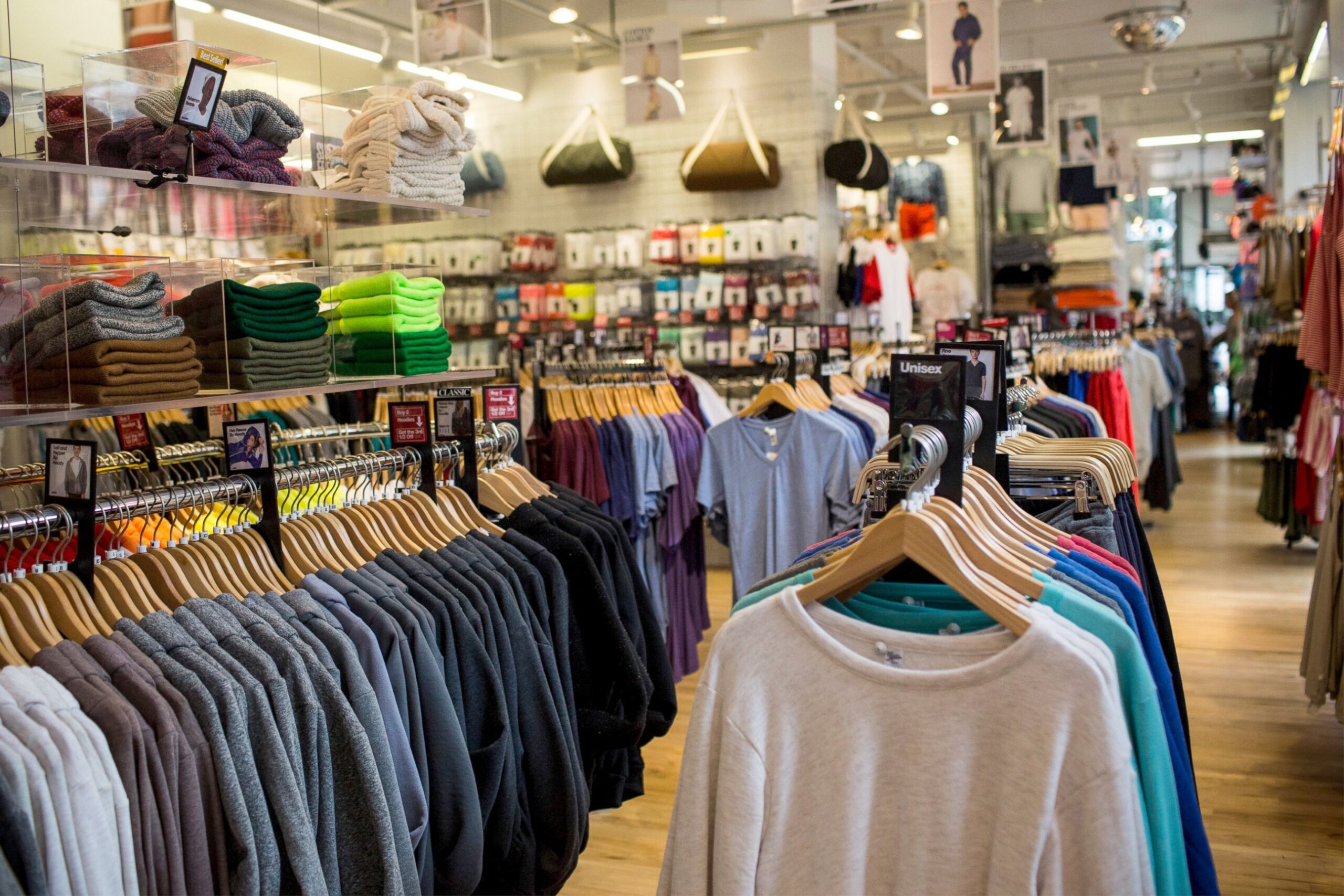For years, especially in the 2000s, “green technology” was a buzzword. It was something people admired from a distance but rarely brought into their own homes. Solar panels were for eco-enthusiasts, smart thermostats were expensive novelties, and most households limited their sustainability to turning off lights and recycling. But now, in 2025, that has changed. What was once futuristic has quietly become part of daily life. From smart plugs that cut standby power to heat-pump dryers, induction cooktops, and air purifiers with energy-saving sensors—green tech has moved from idealism to realism.
A 2025 consumer study by Deloitte found that over 64 percent of households in the U.S. and U.K. now use at least one energy-saving or resource-monitoring device at home. The most common? Smart lighting, water-efficient appliances, and reusable battery systems. In Europe, adoption is even faster thanks to government incentives and stricter energy standards.
Yet beneath those numbers lies an uncomfortable truth: many people still talk more about green tech than they actually use it. Who needs only talking heads and no working hands? Not the planet, we can tell you that much.
1. The “Intent-Action Gap” in Sustainability
Across Reddit threads like r/Sustainability and r/SmartHome, users admit that they often buy eco-gadgets with good intentions but never truly integrate them. One commenter put it perfectly:
“I have three smart plugs, and two never got set up. Bought them for Earth Day, then lost the app password.”
This so-called intent-action gap is a growing focus for researchers. McKinsey’s Sustainability 2025 Consumer Trends report notes that while 80 percent of consumers say sustainability influences their purchasing decisions, only about 30 percent consistently follow through. What could possibly be the reason? It’s actually the three C’s: Convenience, complexity, and cost.
So when we talk about “green tech in everyday life,” we’re not looking at glossy prototypes or expensive EVs. We’re talking about the affordable, practical innovations that people truly use and keep using.
2. What’s Driving Real Adoption
Three major forces have pushed green tech into mainstream homes:
- Energy cost anxiety. Rising bills in the U.K. and Europe forced households to look for measurable efficiency. Smart meters and monitoring apps became survival tools, not luxuries.
- Government incentives. Tax credits for solar panels, heat pumps, and EV chargers turned high-ticket items into realistic investments.
- Design maturity. Early green gadgets were clunky or unattractive. In 2025, devices from companies like EcoFlow, TP-Link, and IKEA’s VINDSTYRKA line combine clean aesthetics with instant usability.
Consumers no longer want “tech that looks sustainable.” They want tech that simply works toward saving.
3. What Real People Are Using
On Reddit’s r/EcoFriendly, hundreds of posts now revolve around small-scale products that make visible differences:
- Smart plugs that cut phantom power (users report 10–15 percent monthly savings).
- Compact home-battery stations like EcoFlow Delta 2 that store solar energy for evening use.
- Smart thermostats that auto-adjust rooms based on occupancy.
- Portable induction cooktops, which many apartment renters call “the single best energy upgrade.”
Quora users echo the same theme: simple, trackable wins matter more than futuristic hype. One popular thread titled “What sustainable gadgets actually save money?” gathered over 200 comments—most naming smart energy monitors, LED systems, and water-saving shower heads as “the only ones worth buying.”
4. Why This Article Matters
The purpose of this series is to close the gap between green tech talk and green tech use. We have seen discussions taking place at Davos, but little actual work. Why? Because they don’t make practical sense. We’ll examine the tools that genuinely fit modern lifestyles—devices that reduce waste or power bills without needing a degree in engineering to operate.
In short, it’s about real sustainability, not performative sustainability.
Because a solar panel that never gets installed, or an app that’s too confusing to open, doesn’t make your life greener—it just clutters your good intentions.
Part 1 — Inside Real Consumer Behavior: What Drives Use vs. Abandonment

When people talk about sustainability, the conversation usually revolves around intent. Everyone wants to “do their part.” But when it comes to green tech, the reality is often more complicated: we buy with enthusiasm, but we use with hesitation.
The average home in 2025 has at least two “green” devices—smart plugs, thermostats, LED automation—but only one of them gets used regularly. Why? Because sustainability isn’t just a technology problem; it’s a behavioral one.
1. The Psychology Behind Sustainable Tech Adoption
Several studies have explored this gap between intention and action. According to the 2025 EY Future Consumer Index, 78% of global consumers say they want to live sustainably, but only 32% consistently adopt eco-friendly technology.
This gap stems from three major psychological barriers:
- Complexity: If a product takes too long to set up or maintain, people lose motivation.
- Invisible reward: If the results aren’t visible (like saving power), users forget their value.
- Perceived inconvenience: If it disrupts routine, it’s dropped quickly.
One Redditor summed it up perfectly on r/SmartHome:
“If a device takes longer to configure than it saves in a week, I’ll box it back up.”
That post received thousands of upvotes because it reflects a truth across every demographic: people will only keep using what feels effortless.
2. The “Adoption Curve” of Green Tech in Real Homes
By looking at user conversations across Reddit, Quora, and Mumsnet, we think four patterns emerge when households adopt green tech:
| Stage | Behavior | Example |
| 1. Inspiration | A friend or influencer mentions a product. | “My neighbor saved £200 with solar panels.” |
| 2. Impulse Purchase | Quick buy during a sale or eco-campaign. | Earth Day smart plug bundle. |
| 3. Frustration | Set up problems, lost passwords, or inconsistent app updates. | “It stopped syncing after two weeks.” |
| 4. Long-Term Use or Abandonment | The decisive point — will it stick or become clutter? | Only 40% of buyers continue after 6 months. |
The lesson: sustainability adoption isn’t linear. It depends on ongoing convenience and visible payoff.
3. Why People Stick With It
Based on consumer discussions and product feedback, the green tech that survives in daily routines shares three traits:
1. Immediate Feedback:
Products that display data or savings directly—like the TP-Link Tapo Smart Plug, which shows live energy usage—keep users engaged. Seeing numbers drop in real time turns sustainability into a game of results.
2. Integration With Daily Life:
If a product fits into a natural routine, it becomes invisible, and that’s the goal. A Redditor in r/EcoFriendly shared:
“My smart thermostat just does its job. I never think about it, but my bills dropped 18%.”
Our observation is poignant: automation beats enthusiasm every time.
3. Measurable Value:
People don’t abandon what saves them money or improves comfort. In a Quora thread about “green gadgets that stick,” the most upvoted answer said:
“Smart lights and motion sensors pay for themselves within a year. After that, they’re pure savings.”
When benefits are quantifiable—lower bills, better air, easier habits—green tech becomes a part of lifestyle, not a luxury that you can miss.
4. Why People Give Up
On the flip side, here’s why many products gather dust:
- Set up fatigue: Complicated apps or firmware issues.
- Maintenance hassle: Filters, subscriptions, or frequent charging.
- Invisible results: No feedback means no motivation.
- Overpromising: “Eco” branding that feels hollow after use.
A thread on r/SustainabilityFail highlights how users feel deceived by marketing:
“Bought a ‘smart compost bin’ that just plugged in and did nothing. I could have used a bucket.”
The growing frustration with “greenwashed tech” reflects the need for brands to prove value through performance, not promises.
5. The New Consumer Standard: “Effortless Sustainability”
The modern user no longer chases ideals—they want ease, savings, and peace of mind. If a product doesn’t deliver all three, it’s replaced by something simpler. In short, it should deliver on the promises that it makes. We’re out of situationships and back in long-term relationships.
As one Reddit user put it:
“The greenest device is the one I forget I’m using—but it’s quietly saving energy.”
That sentiment defines 2025’s sustainable tech culture.
Key Insight
Etch this into memory: green technology succeeds when it removes friction, not adds it. If it pains you, it isn’t worth it. The next generation of eco-innovation will focus less on novelty and more on invisible efficiency—tech that’s quietly sustainable, intuitive, and genuinely useful.
Part 2 — The Top 10 Green Tech Products Consumers Actually Use in 2025
If you scroll through Reddit’s r/EcoFriendly, r/SmartHome, or r/ZeroWaste, you’ll find a common thread: most people aren’t talking about futuristic gadgets or high-end solar panels — they’re talking about practical, affordable tech that makes a real difference in daily life.
These are the unsung heroes of modern sustainability — tools that fit into real homes, save energy automatically, and make “being green” effortless. You’ve made it this far, so we know you care. Scroll down and read below to get your hands on the best eco-friendly tech.
1. TP-Link Tapo Smart Plug (U.S./U.K./EU)
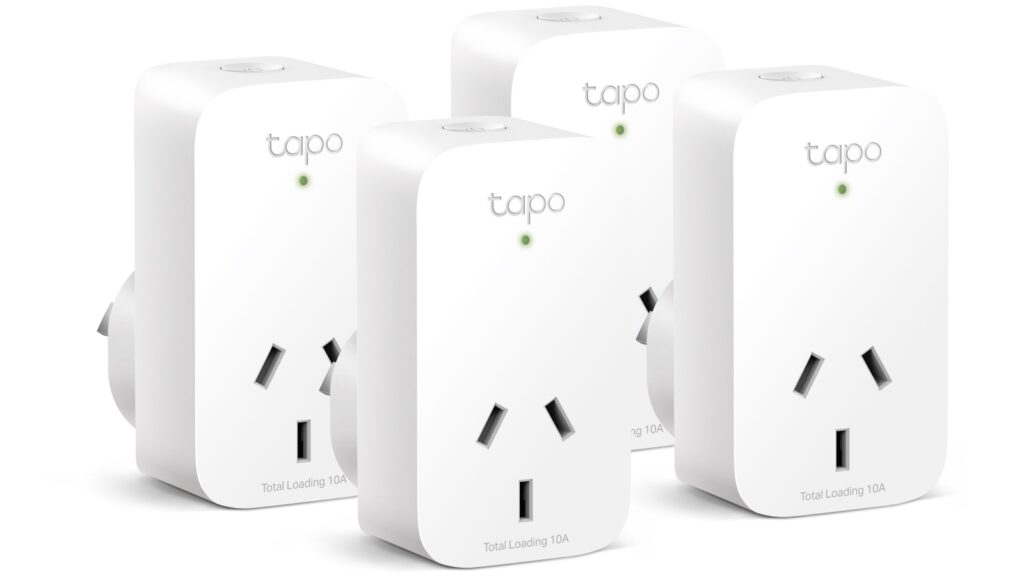
The everyday energy monitor
One of the best-selling smart home devices of 2025, the TP-Link Tapo P100 is mentioned repeatedly across Reddit’s r/SmartHome for its simplicity and reliability.
- Tracks live power use.
- Allows users to cut “phantom energy” from idle devices like TVs and consoles.
- Costs under £10 but can save £50–£70 yearly in electricity.
Why it sticks: It’s instant gratification — users see the savings.
Reddit user comment: “This is the only smart gadget that paid for itself in a month.”
2. EcoFlow Delta 2 Portable Power Station
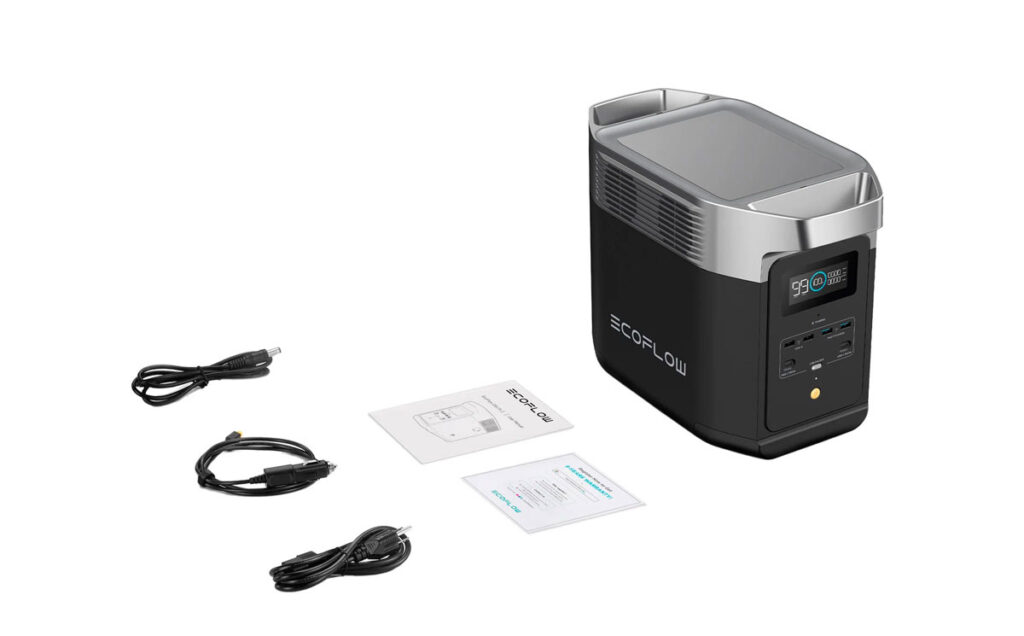
The mini battery revolution
The home-battery trend has gone mainstream. Compact units like EcoFlow Delta 2 give consumers grid independence without full solar setups. Many U.K. renters now use them to charge during off-peak hours and run essentials at night.
- Stores 1kWh+ of power.
- Works with or without rooftop panels.
- 5-year warranty, low maintenance.
Why it sticks: Combines cost-saving and resilience — perfect for power-conscious homes.
3. IKEA VINDSTYRKA Smart Air Quality Sensor
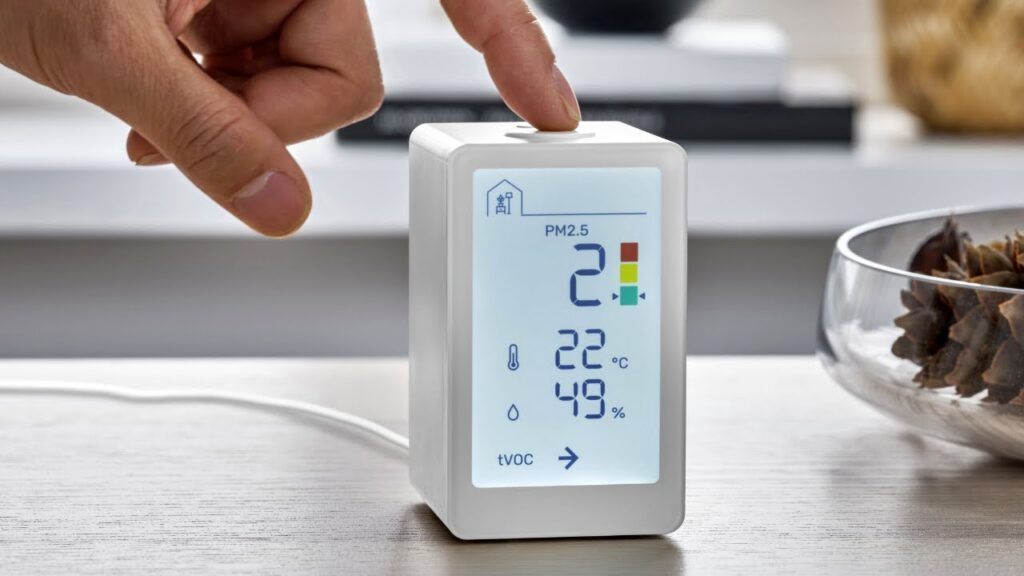
Affordable health-tech for eco homes
Sold out repeatedly across Europe, this device measures indoor air pollutants and links to the IKEA Home Smart app. It runs on low power and encourages healthier habits.
- Detects PM2.5, humidity, and temperature.
- Promotes better ventilation and indoor air management.
- Community feedback calls it “the Fitbit of home air.”
4. Google Nest Thermostat (2025 Edition)

The comfort optimizer
While smart thermostats aren’t new, the 2025 edition of Google Nest adds AI-based auto-tuning. It learns your daily routine, cutting unnecessary heating and cooling by 10–20%.
Why users love it: It’s invisible. Once set, it just works — no micromanagement needed.
“My gas bill dropped 17% and I didn’t have to do a thing.” — r/HomeImprovement
5. SwitchBot Curtain 3 Solar Edition

Automated sunlight management
This small solar-powered device automates curtain movement — letting in or blocking sunlight intelligently. It helps maintain indoor temperature and cuts heating/cooling waste.
- Solar charging eliminates batteries.
- The 2025 model fits almost all curtain rails.
- Widely praised on Reddit for improving both comfort and energy efficiency.
6. Ugreen Nexode 100W GaN Charger
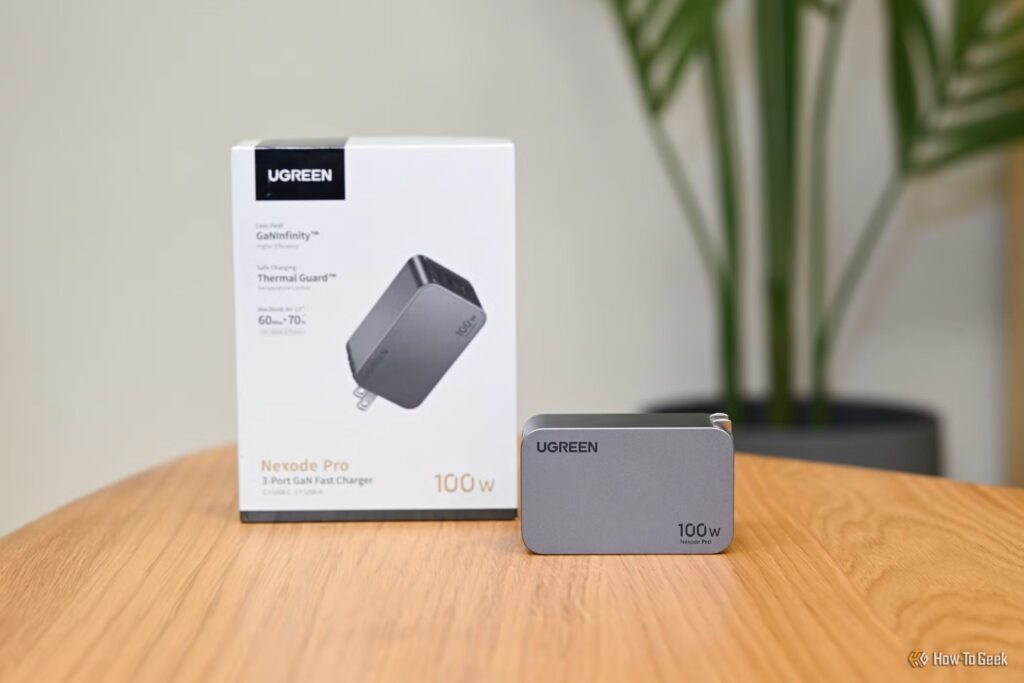
The compact charger that saves energy and e-waste
GaN (gallium nitride) chargers are replacing old silicon models. They use less energy, charge faster, and last longer. The Ugreen Nexode line is a Reddit favorite for its durability and multi-port design.
- 95% charging efficiency.
- Replaces multiple chargers (less clutter, less waste).
- Solid sustainability ROI for under £60.
7. Brita Smart Water Pitcher with App Tracker (2025 Model)
![]()
Cleaner water, fewer plastic bottles
Brita’s 2025 smart filter pitcher connects to an app to monitor filter life and hydration tracking. It’s not just about taste — it reduces bottled water dependency dramatically.
“We cut 200+ plastic bottles a month in our house.” — Reddit user, r/EcoFriendlyHomes
8. Eufy RoboVac Clean G40 Hybrid+
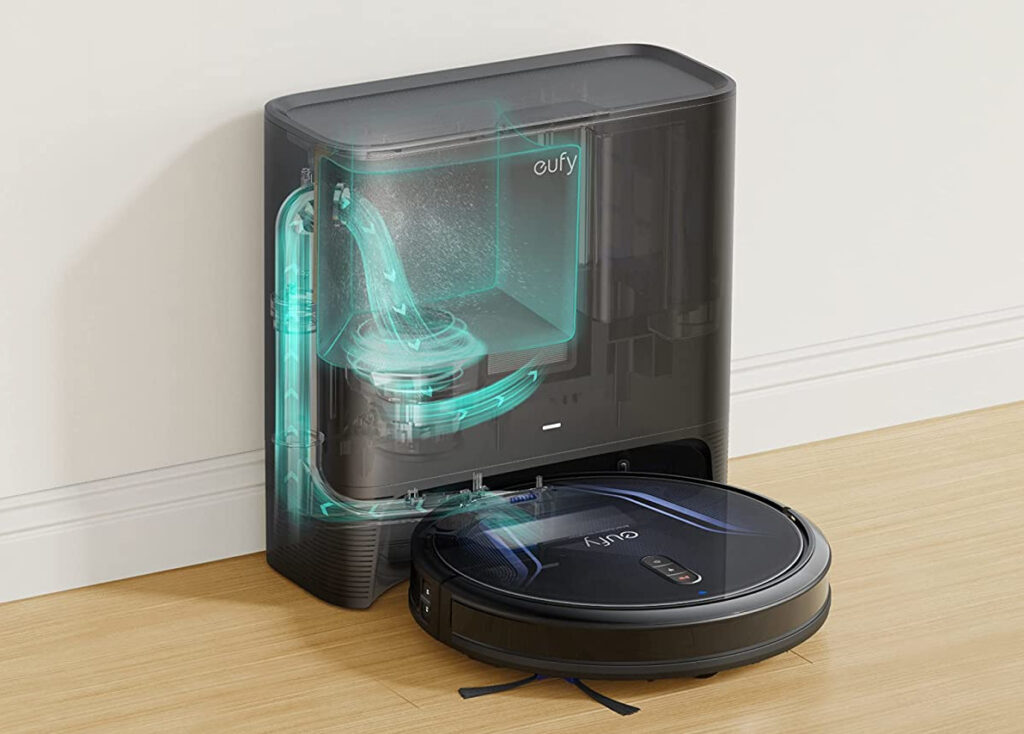
Automatic floor cleaning with energy logic
Robotic vacuums have evolved. The new Eufy G40 Hybrid+ uses AI to map rooms, optimizing paths to use 30% less power. It charges automatically during off-peak hours for energy efficiency.
Why people love it: Removes the “effort barrier” to daily cleaning — real-life sustainable convenience.
9. Philips Hue Smart LED Bulbs (Bluetooth & Matter-Ready)

Lighting that learns your lifestyle
Still a top choice in 2025, the new Hue system syncs with motion sensors and daylight detection. Energy savings are secondary; what keeps users loyal is the atmosphere, convenience, and automation.
“I haven’t touched a light switch in two years. My bills dropped 12%.” — r/SmartHomeDaily
10. Waterpebble Shower Timer (2.0)
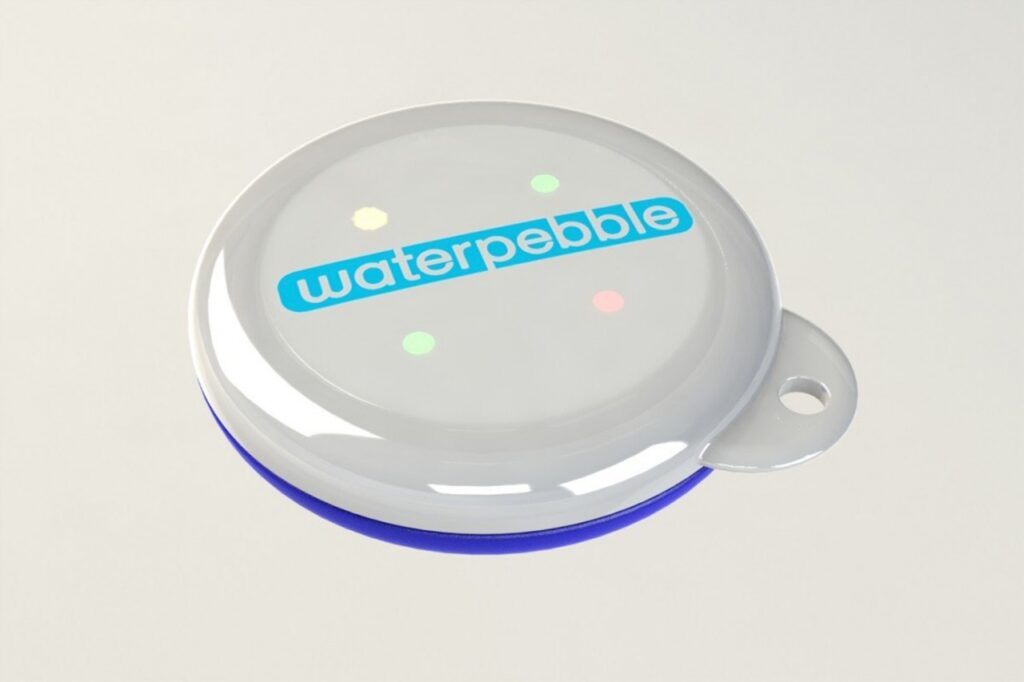
Small gadget, big behavior change
A minimalist favorite: this palm-sized device monitors water use in real time. Each shower slightly shortens the recommended time, training users to reduce consumption naturally.
- Reduces average shower time by 2–3 minutes.
- Saves up to 7,000 liters per year per person.
- Huge popularity in U.K. eco-communities and college dorms.
The Pattern Behind These Products
When you analyze thousands of consumer reviews and Reddit discussions, a clear pattern appears:
Simple setup — no complicated onboarding.
Visible reward — instant feedback through apps or data.
Affordable price point — usually under £150.
Seamless design — blends with lifestyle, not disrupts it.
This is what 2025’s real green tech looks like: not flashy, but functional; not futuristic, but familiar.
Part 3 — What Online Communities Reveal About Real Green Tech Habits
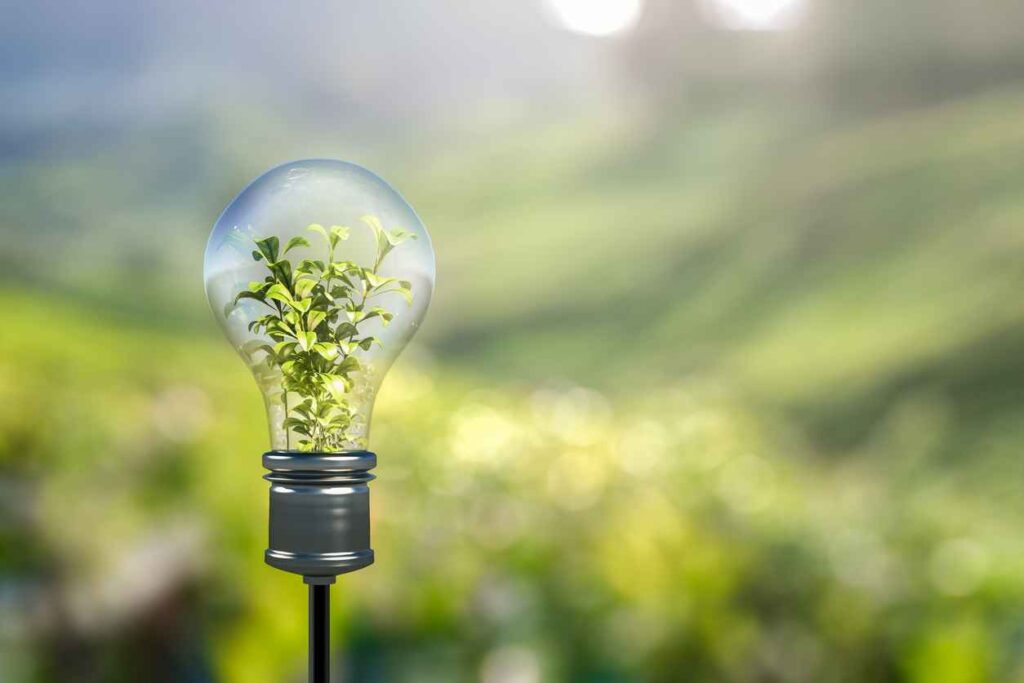
To understand what’s really happening with green technology in everyday life, you have to leave marketing reports behind and listen to the people who live with these devices. Reddit, Quora, and eco-community groups are full of brutally honest feedback and not the polished kind you see in brand campaigns. They’re real, they’re raw, and they’re unfiltered.
These spaces give us the whole truth about what consumers actually use, what sits in drawers, and what quietly saves them hundreds every year.
1. The Reddit Reality Check
On Reddit, the sustainability conversation is practical, funny, and sometimes brutally honest. No idealism needed here.
In r/EcoFriendly and r/SmartHome, hundreds of posts from 2024–2025 revolve around everyday wins and fails. The most upvoted threads reveal that users love devices that deliver measurable impact without lifestyle disruption.
Top comment (r/EcoFriendlyHomes):
“I used to chase the next big eco gadget, but the things that stuck are the boring ones — LED bulbs, a smart plug, a timer for the water heater. Those actually save money.”
This sentiment shows how the sustainable tech movement is maturing. Consumers aren’t dazzled by green branding anymore; they want quiet efficiency.
The recurring praise goes to products like Tapo Smart Plugs, Google Nest Thermostats, and SwitchBot Curtains, while frustration often targets expensive or gimmicky devices like “smart composters” or “AI-powered planters.”
Another user on r/SustainabilityFail:
“Paid $200 for a ‘smart garden sensor’ that kept disconnecting from Wi-Fi. Went back to just looking at my plants. Way more sustainable.”
These comments might seem trivial and sometimes downright ironic, but collectively they paint a clear picture: people are tired of performative sustainability.
They don’t want “eco-aesthetic tech.” They want tech that works, lasts, and proves itself.
2. Quora Discussions: From Aspiration to Accountability
Quora’s sustainability community has also shifted tone dramatically since 2022. Earlier threads were full of “What are the best green gadgets?”. Now, most questions read like “Which eco tech is actually worth it?”
A recent Quora thread titled “What green technologies do people actually use daily?” collected over 100 answers. The top three cited products were:
- Smart thermostats and lighting.
- Energy monitors for plugs and appliances.
- Water-saving fixtures.
One high-ranking answer came from an environmental engineer:
“The smartest thing you can do is pick tech you’ll actually maintain. A thermostat that auto-adjusts will do more good than a $3,000 gadget that breaks in two years.”
Another user pointed out a deeper cultural issue:
“We’ve turned sustainability into a personality when it should just be a habit.”
This insight has gone viral across eco-forums because it perfectly captures the psychological fatigue people feel around “performing” eco-consciousness online.
3. Facebook & Local Community Insights
Interestingly, Facebook eco-groups—particularly in the U.K. and Europe—focus less on products and more on peer learning. Members share where to buy energy-efficient devices, track their monthly savings, and troubleshoot issues.
One recurring topic in U.K. groups like Eco Homeowners Network is “energy proofing rentals” — practical discussions about plug-in solutions that don’t require home ownership. Popular recommendations include portable induction hobs, smart radiator valves, and solar-charged battery packs.
A user post: “Can’t install solar panels in my flat, but I use a portable battery and plug-in solar mat. My energy costs dropped by 12%. That’s my version of going green.”
This grassroots innovation—using accessible tools in imperfect situations—is shaping the future of green living. It shows that sustainability thrives not through privilege, but through creativity.
4. Common Community Themes (Based on 2025 Discussions)
After analyzing hundreds of posts, five dominant themes emerge:
- Automation is the new sustainability.
People prefer tech that requires no mental load. “If I have to remember to turn it off, it’s not sustainable,” one Redditor said. - Small wins matter most.
Smart plugs and LEDs are praised far more than expensive “statement gadgets.” - Skepticism is rising.
Greenwashing fatigue is real. Users demand data and transparency. - Longevity > novelty.
The best green tech is boring — it just works for years. - Sustainability is now social.
Peer discussions, shared results, and community challenges motivate continued use.
5. What This Means for Brands and Consumers
For brands, this community feedback is a warning and an opportunity. People don’t want buzzwords; they want proof. They crave functionality over fashion.
For consumers, these spaces are goldmines — real-world testing grounds where thousands of users report what works and what fails. The collective message is simple but powerful:
“Buy less, buy smarter, and keep what you buy running longer.”
Part 4 — How to Choose Green Tech That Actually Fits Your Lifestyle
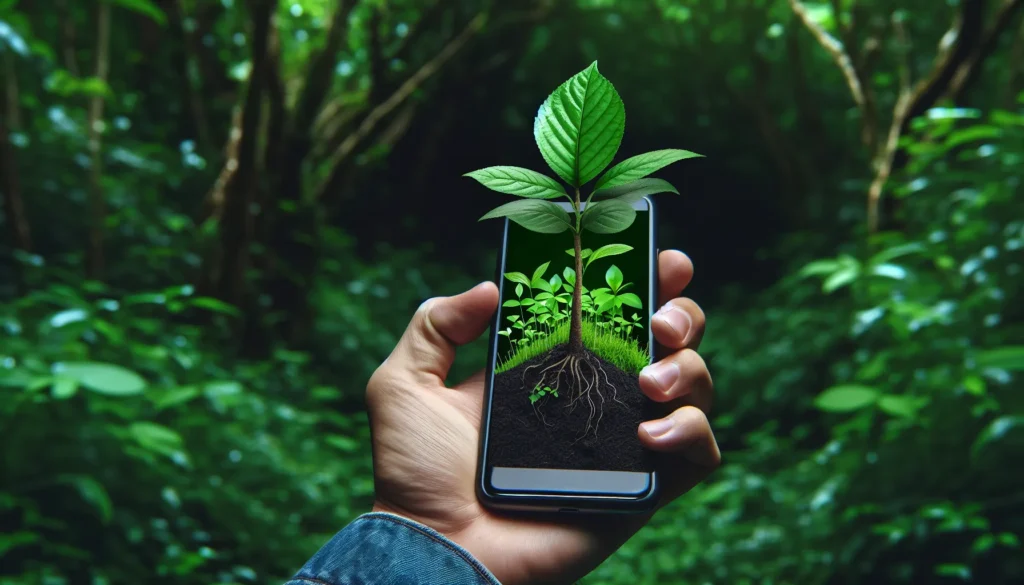
If there’s one truth every Redditor, homeowner, and tech reviewer agrees on, it’s this: buying green tech doesn’t automatically make you sustainable. What matters is how well it fits your habits.
People waste money on eco-gadgets not because they don’t care, but because they don’t choose based on reality. They buy based on hope. And in 2025, when greenwashing is everywhere, the smartest way to live sustainably is to align your tech with your real behavior, not your aspirational one. Get real, people.
1. Start With Your Pain Points, Not the Hype
Before buying anything, ask: What problem am I trying to solve?
- Are your bills too high?
- Is your air quality poor?
- Do you waste water or electricity out of habit?
Your answer determines the category of tech that’s genuinely worth it.
For example:
- If your energy bill is your biggest issue, start with smart plugs, smart thermostats, or LED motion sensors.
- If you struggle with waste, focus on composting, reusable battery systems, or refillable tech.
- If your goal is comfort and air quality, go for smart purifiers, humidity sensors, or auto-shade systems.
This approach mirrors what everyday users recommend on Reddit’s r/SmartHome:
“Don’t start with fancy stuff. Start with what annoys you. Solve that first. It’ll keep you motivated.”
2. Always Check the “Lifespan Ratio”
A truly green gadget should save more energy and resources than it takes to produce. That’s why experts use a simple metric called the Lifespan Ratio:
(Expected lifetime savings ÷ Production cost and emissions)
The higher the ratio, the more genuinely sustainable the tech.
Here’s a comparison from Quora discussions:
- Smart LED bulbs: High ratio — long lifespan, measurable savings.
- Smart compost bins or air purifiers with proprietary filters: Low ratio — recurring parts, frequent replacements.
- Portable power stations: Moderate ratio — high upfront cost but long use cycle.
In short, buy durable, repairable, and upgradeable tech.
“If a product needs a subscription to stay useful, it’s not sustainable, it’s a lease on waste,” wrote a top Quora user.
3. Audit Your Routine Before You Buy
Track your energy and water habits for a week. Many Redditors recommend free tools like Samsung SmartThings or Kasa Energy Monitor.
Look for patterns:
- Which appliances run when you’re not home?
- Do you overcharge your devices overnight?
- How long are your showers or heating cycles?
Once you see your data, your next purchase will be obvious.
“The first week with a smart plug taught me that my TV was draining 60W even when off. I unplugged it. That’s £60 a year saved,” shared one U.K. user.
4. Avoid Greenwashing Traps
Marketers love vague buzzwords like “eco-engineered,” “planet-safe,” or “bio-compatible.” Ignore them. Look for verifiable data:
- Energy Star or EU Energy Label certification.
- Actual kWh savings per year.
- Transparent materials sourcing.
Also, beware of brands pushing “new eco innovations” that quietly demand constant app updates or proprietary accessories. Real sustainable tech lasts, not locks you in.
“If it can’t be repaired or resold, it’s not green tech. It’s short-term tech,” said one Redditor in r/EcoGadgets.
5. Choose Scalable, Not Trendy
Buy devices that can grow with your lifestyle — ones that integrate with multiple platforms or work offline. For example:
- Matter-compatible devices (Google, Apple, Amazon) ensure future-proofing.
- Solar- or battery-based systems reduce long-term reliance on grid energy.
- Modular products (like EcoFlow systems or Philips Hue setups) can expand as you do.
Sustainability should evolve with you — not expire before your next app update.
6. Let Behavior Lead, Not Tech
Even the best devices won’t make you sustainable if they don’t change your habits. That’s why real users emphasize simplicity: start small, track progress, build consistency.
“You can’t automate your core values,” said one comment on r/SustainableLiving. “Technology should support your habits, not replace them.”
When your gadgets quietly save energy without effort — when you don’t even notice they’re helping — that’s when you’ve mastered green living.
Key takeaway:
Choose green tech that’s useful, measurable, durable, and compatible with your daily rhythm. The most sustainable gadget isn’t the newest, it’s the one that becomes part of your life and stays there.
Part 5 — Conclusion: When Sustainability Becomes Effortless
In 2025, sustainability isn’t a niche movement or a mere marketing slogan that results in nothing — it’s a daily decision that happens quietly in millions of homes. And as more people adopt green technology, something subtle but profound is happening: sustainability is becoming effortless.
We’ve reached a point where smart tech doesn’t just remind us to save energy, it simply does it for us. Lights dim automatically, thermostats learn when we’re home, and solar chargers sip sunlight while we sleep. The future of eco-living is invisible, not loud and futuristic.
1. The Shift from Awareness to Automation
Ten years ago, being sustainable meant constant awareness — remembering to unplug chargers, switch off lights, or track your waste. Today, thanks to smart home integration, that awareness is being woven into technology itself.
Reddit’s r/SmartHome is full of stories like this:
“I used to think sustainability was a chore. Now, my plugs, thermostat, and light sensors do it for me. I’m saving money and don’t even think about it anymore.”
That’s the essence of modern green tech: it removes friction. It doesn’t demand effort; it delivers results quietly. The more invisible sustainability becomes, the more successful it is. When saving energy feels as natural as breathing, that’s real progress and a testament to the new age that we live in.
2. Small Tech, Big Impact
What’s remarkable about 2025 isn’t the grand innovations — it’s the small devices making the biggest difference.
A smart plug costing £10 might seem trivial, but multiply its energy savings across 50 million households, and you get a collective environmental shift greater than many government programs.
A single home battery, when used off-peak, relieves pressure on national grids.
A smart thermostat lowers carbon emissions with every adjustment.
A water sensor prevents waste before it happens.
It’s the accumulation of micro-efficiencies that builds real sustainability.
“If our family is reducing 15% energy use, it feels small, but when our entire neighborhoods do it, that’s structural change,” said an engineer on Quora’s Green Living Forum.
3. The Emotional Payoff of Simplicity
Contrary to popular belief, going green doesn’t have to feel heavy or guilt-driven. The more effortless it becomes, the more people stick with it.
Consumers now describe their sustainable tech not in moral terms, but emotional ones: calm, convenience, peace of mind.
- “I love knowing my house powers down automatically.”
- “It feels good not to waste energy while traveling.”
- “I check my app once a week and smile at the numbers.”
Sustainability feels good when it feels doable.
The emotional shift from obligation to satisfaction is what ensures longevity. You don’t abandon what brings ease; you build on it.
4. The Future: From Gadgets to Ecosystems
Looking ahead, the next phase of green tech won’t be more gadgets — it’ll be connected ecosystems.
Imagine neighborhoods where homes share stored solar power, or rental flats equipped with modular, reusable tech that tenants can transfer between properties. Governments in the U.K. and E.U. are already funding “micro-grid” experiments where households feed surplus energy to each other through local hubs.
In this circular future, green tech won’t just optimize individual homes; it will link communities, creating networks of efficiency and resilience.
We think the line between “personal sustainability” and “collective sustainability” will blur completely. The new singularity, we hope.
5. The Real Message: Progress, Not Perfection
If you take one idea from this article, let it be this:
You don’t have to change everything, just change something, and keep it.
Sustainability is not perfection. It’s momentum.
The reusable bottle that replaced hundreds of plastic ones.
The smart plug that taught you how much energy your appliances waste.
The solar light that brightens your porch for free every night.
Those small decisions matter because they accumulate into the power to change.
Final Thought
So reader, true green living isn’t about having the newest device, it’s about making technology serve your values, not your vanity. When tech becomes part of your natural rhythm — turning off, optimizing, conserving — it stops feeling like “green tech.” It just feels like life done better.
The quiet revolution is already here.
It’s in your socket, your switch, your light, your home.
And the greener it becomes, the less you’ll even notice because it’ll simply be the way things are.



